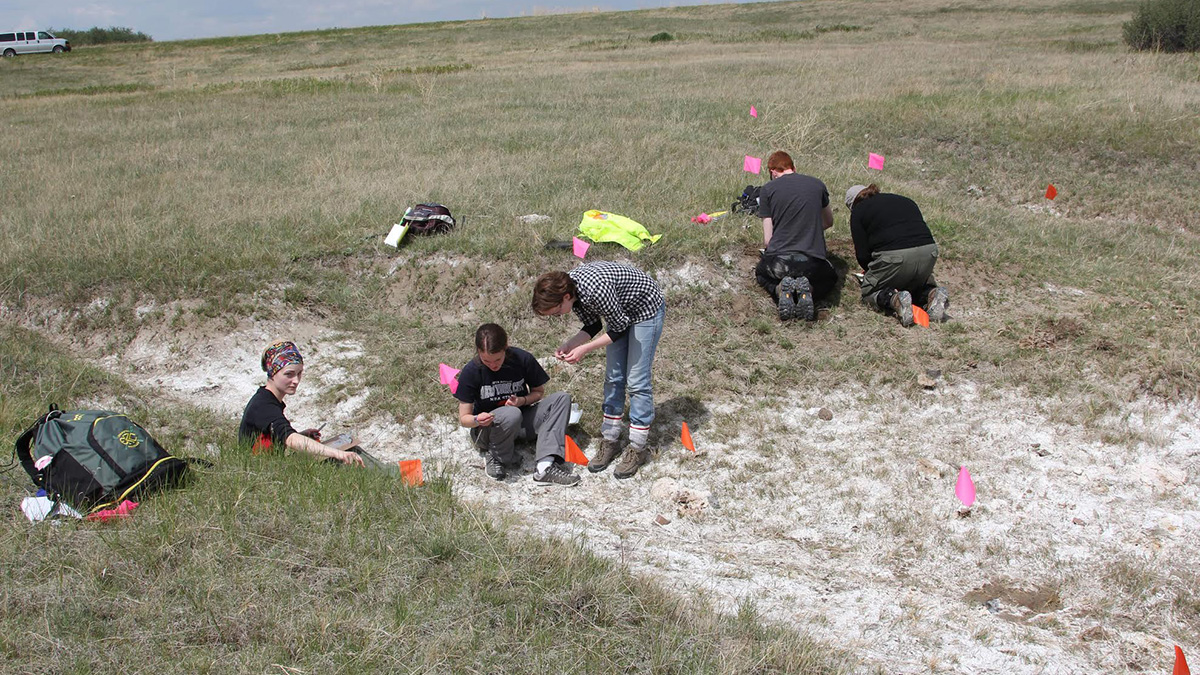Institute of Prairie Archaeology takes students to the field to learn about cultural landscapes of First Nations
 Supplied
SuppliedFieldwork-oriented students can learn about the cultural landscapes of Treaty 6 and Treaty 7 areas in Alberta at the Institute of Prairie Archaeology (IPA).
Housed in the University of Alberta’s Department of Archaeology, since 2008 the IPA has hosted archaeologists who research the Canadian Plains and the northern United States. For undergraduates on their way to becoming archaeologists, the IPA is one place to learn essential fieldwork skills.
Hosted by the IPA, ANTHRO 396 (Archaeological Field Methods) takes students to work in the relatively undisturbed prairie landscapes of the Mattheis and Kinsella ranches near the Albertan towns of Brooks and Irma. The ranches have surface features and buried archaeological sites that would have otherwise been altered by agriculture.
According to Jack Ives, executive director of the IPA, teaching practical fieldwork skills is one of the school’s priorities. Students on site learn to survey and map surface features, as well as detect buried sites as if in a real-world study.
At the Mattheis ranch, students work with tepee rings — circles of stones that were once used to hold down the edges of tepees. The ranch also has a buried archaeological site with evidence of Blackfoot material culture.
“With all the agriculture in the province, you can imagine all the things that were really common in the past, such as stone tepee rings,” Ives said. “These areas where there are native prairies still in place are really great (to train students).”
Ives added that the field school gives students the chance to work with Blackfoot ceremonialists who teach about medicine wheels and the Blackfoot perspective of the Albertan cultural landscape. Ives said that in previous years, relations between First Nations communities and archaeologists were tense, as archaeological work disturbed cultural landscapes.
“When archaeology was conducted as a scientific endeavour, people just went off and excavated medicine wheels or burials without consulting First Nations communities,” Ives said.
As policies changed, consultation with First Nations groups became necessary for developing land. Ives said now archaeologists have become more sensitized to methods of study that respect First Nations people and their cultural landscapes. Collaboration between archaeologists and First Nations groups help identify, preserve, and visit cultural landscapes that are important to tradition. Ives said his work has included this type of collaboration for at least 20 years.
Through the Department of Anthropology, the IPA also teaches about First Nations vitality and self-sufficiency in ANTHRO 256 (Alberta Archaeology).
“Mainstream Canadians hear a lot of bad news about First Nations people,” Ives said. “That’s not the whole story. There were at least 13,000 years of vital, successful First Nations societies.”
While the institute encourages Anthropology majors to take the 200-level course on campus, Ives said he loves to see a diversity of majors participating in the course. A third of the students in ANTHRO 256 course tend to be from the Faculty of Education — Ives is hopeful that in the future, these students can educate others on First Nations vitality learned in the course.




